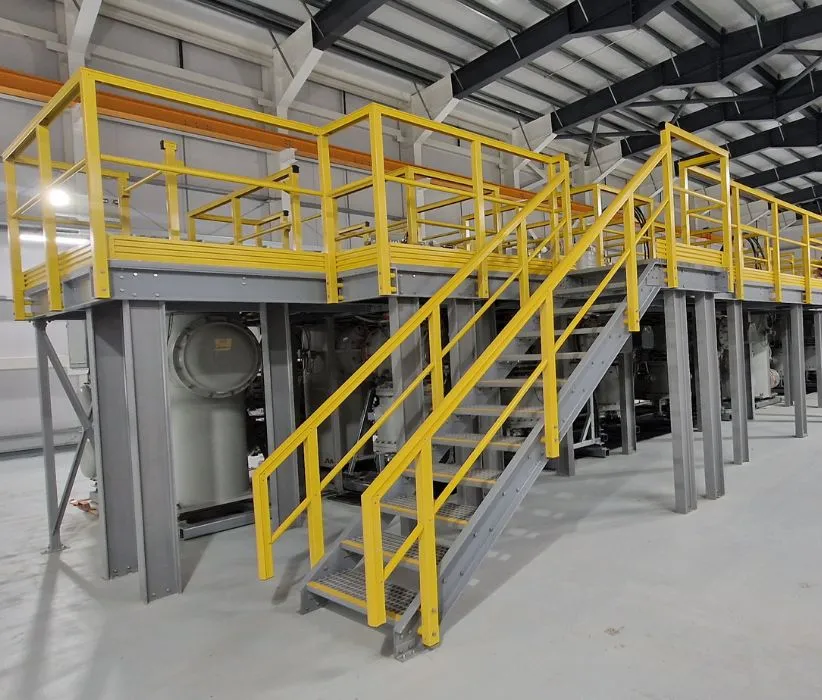loading...
- No. 9, Xingyuan South Street, Dongwaihuan Road, Zaoqiang County, Hengshui, Hebei, China
- admin@zjcomposites.com
- +86 15097380338
- Welcome to visit our website!
Fiber Reinforced Polymer Bars for Enhanced Structural Performance and Durability in Construction Applications
Fiber Reinforced Polymer Bars A Revolution in Construction Materials
In recent years, the construction industry has experienced a significant shift towards using advanced materials that enhance performance while reducing weight. Among these innovative solutions, Fiber Reinforced Polymer (FRP) bars have emerged as a game-changer. These composite materials, made from a polymer matrix reinforced with fibers, offer numerous advantages over traditional materials such as steel.
What are Fiber Reinforced Polymer Bars?
Fiber Reinforced Polymer bars consist of a polymer matrix—usually epoxy, polyester, or vinyl ester—reinforced with high-strength fibers like glass, carbon, or aramid. The result is a material that exhibits remarkable strength-to-weight ratios, corrosion resistance, and flexibility, making it an attractive alternative for various construction applications.
Advantages of FRP Bars
1. Corrosion Resistance One of the most significant benefits of FRP bars is their inherent resistance to corrosion. Unlike steel, which can rust and deteriorate over time when exposed to harsh environmental conditions, FRP bars maintain their structural integrity and performance. This quality is particularly valuable in coastal areas, where saltwater can severely damage traditional materials, or in applications involving chemicals and aggressive environments.
2. Lightweight FRP bars are significantly lighter than steel, which simplifies handling, transport, and installation. Their reduced weight can also lead to lower labor costs and decreased overall project expenses. Reduced weight is particularly advantageous in applications such as bridge construction, where minimizing the load on supporting structures can enhance safety and longevity.
3. High Strength-to-Weight Ratio Despite being lightweight, FRP bars exhibit exceptional tensile strength. For designers and engineers, this means they can create structures that are not only safe but also more economical. The high strength allows for the use of fewer materials, reducing both the environmental impact and the project's carbon footprint.
4. Durability FRP bars exhibit superior durability compared to traditional steel reinforcement. They are not subjected to fatigue under cyclic loading, making them ideal for structures exposed to dynamic loads, such as bridges and high-rise buildings.
fiber reinforced polymer bars

5. Versatility The versatility of FRP bars means they can be customized to meet specific project requirements. Different types of fibers (glass, carbon, aramid) can be used depending on the desired properties, such as strength, stiffness, and thermal resistance. This adaptability opens new avenues for design and construction methods.
Applications of FRP Bars
The applications of Fiber Reinforced Polymer bars are vast and varied. In civil engineering, they are primarily used in reinforced concrete structures where corrosion resistance and lightweight properties provide significant advantages. Common applications include
- Bridges With their resistance to environmental factors and fatigue, FRP bars are increasingly utilized in bridge reinforcement, enhancing longevity and safety. - Parking Structures Their lightweight characteristics and resistance to corrosion make them ideal for parking garages and structures exposed to de-icing salts. - New Constructions More builders are incorporating FRP bars in new structures where traditional steel reinforcement might face challenges related to corrosion and weight.
Challenges and Considerations
Despite their numerous advantages, the adoption of FRP bars does encounter some challenges, primarily related to cost and industry acceptance. FRP bars can be more expensive than traditional steel options, which may deter some projects, especially those with budget constraints. Additionally, the engineering community is still acclimating to the use of these materials, which can slow down widespread adoption.
Conclusion
Fiber Reinforced Polymer bars represent a revolutionary development in construction materials, providing durable, lightweight, and corrosion-resistant solutions for modern building practices. Their unique properties not only meet the demands of contemporary engineering but also address the need for sustainable and efficient construction methods. As the industry continues to evolve, FRP bars are poised to play a critical role in shaping the structures of tomorrow, supporting a more resilient and sustainable built environment.
-
GRP Structures: The Future of Lightweight, High-Performance EngineeringNewsJun.20,2025
-
FRP Water Tank: High-Performance Storage for Corrosive and Clean Water SystemsNewsJun.20,2025
-
FRP Square Tube: The New Industry Standard for Chemical and Structural ApplicationsNewsJun.20,2025
-
FRP Pultruded Profiles: The Ultimate Choice for Lightweight Structural StrengthNewsJun.20,2025
-
FRP Handrails: The Safer, Smarter, and Stronger Choice for Modern InfrastructureNewsJun.20,2025
-
FRP Grating: The Smart Solution for Durable, Lightweight Industrial FlooringNewsJun.20,2025
-
Why Choose a Galvanized Water Tank for Your Storage NeedsNewsMay.21,2025
